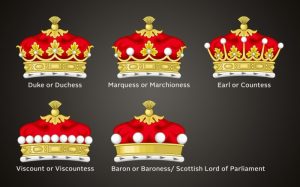Victorian Baroness: The reign of Queen Victoria in England from 1837 to 1901, often termed as “The Victorian Age” saw the rise of social prosperity and along with it, titles and its social significance. Various ranks were bestowed on individuals to properly rule the kingdom. The Barons can be said to be the holders of the lowest rank among the British nobility.

The word “baron” comes from the Old Germanic word “Baro” meaning “freeman”. The Old English term “born” is also considered related to the tile which stands for “warrior nobleman”. In the “Peerage of the United Kingdom”, barons form the lowest rank, placed immediately after the discounts.
A female of baronial rank was referred to as “Baroness”. William, I had bestowed the rank of baron to confer on those men who had pledged their loyalty as well as service to him as per the feudal system. Barons were adorned with a distinct robe right from their creation ceremony and were to attend the council.
Victorian Baroness
Initially, all those held land directly from the King via military service, after earls, bore the significant title of Barons. But a classification was soon made between the title itself as “Great Barons” and “Lesser Barons” respectively.
Barons usually were tenants-in-chief, the holders of land granted to them directly by the Monarch. The general form of address is “Lord/Lady”.Not all British nobles possess baronies. Barons are the majority of the nobility in Britain.
Life peers were always barons or baronesses. However, their status got diminished in the Victorian Age but it still stood for a noble title undoubtedly. However, this title of significance should be clearly distinguished from the “baronet which is certainly not a “peer” and were not awarded seats in The House of Lords.
With the formation of the United Kingdom in 1801, a successful establishment of peerage was made in the British system. The Barons could pass on the land held by them to their heirs which were of specific advantage.
More Info On- What is a Baronet, Female Royalty Titles